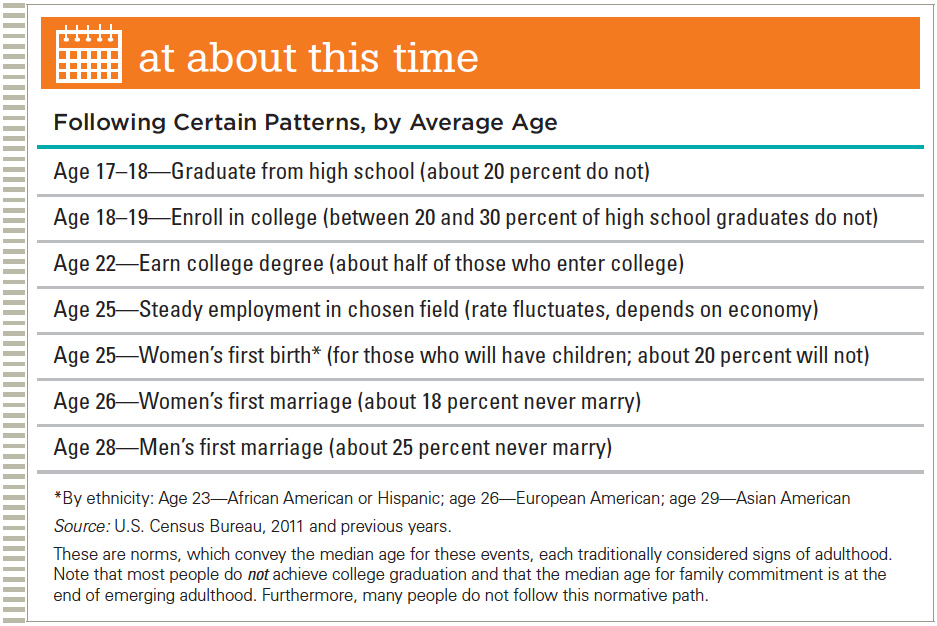EPILOGUE: Emerging Adulthood
EPILOGUE
Emerging Adulthood
|

|

What Will You Know?

Why are young adults having so few children? Delayed marriage, increasing numbers of young people entering college, and increased acceptance of and access to contraception has led to young adults having fewer children.
Does college change the way people think? According to one classic study, thinking progresses through nine levels of complexity over the four years that lead to a bachelor's degree, moving from a simplistic dualism (right or wrong, yes or no, success or failure) to a relativism that recognizes a multiplicity of perspectives. In general, the more years of higher education a person has, the deeper and more postformal that person's reasoning becomes. However, contemporary research challenges these earlier findings. Notably, a twenty–first–century longitudinal study of a cross–section of U.S. college students found that students' growth in critical thinking, analysis, and communication over the four years of college was only half as much as among college students two decades ago. This analysis of the first two years of college found that 45 percent of the students made no significant advances at all.
Do emerging adults still need and want their parents in their lives? If anything, parents today are more important to emerging adults than ever. Two experts in human development write: “With delays in marriage, more Americans choosing to remain single, and high divorce rates, a tie to a parent may be the most important bond in a young adult's life.” When they do not live at home, emerging adults see their parents, on average, several times a week and phone them even more often.
|
-
a case to study: An Adrenaline Junkie
-
Postformal Thought and Brain Development a view from science: Stereotype Threat
-
Personality in Emerging Adulthood Emerging Adults and Their Parents
|
Consider this brief chapter both a review and a preview. It follows the same sequence as at earlier stages—body, mind, and social context—always noting the impact of genetic, prenatal, and early experiences and consequences for later development. You will see many familiar themes—echoes of early relationships, cultural differences, contextual and cohort effects. Emerging adulthood is a time when people continue learning and exploring, postponing marriage, parenthood, and career (see At About This Time), and preparing for the rest of life.
I followed this path myself. Between ages 18 and 25, I attended four colleges or universities, changed majors five times, rejected marriage offers from four young men, lived in ten different places, and started several jobs—none lasting more than 18 months.
Following that period of rapid change, I stayed put—decades later I still have had one husband, one neighborhood, one career, and since age 30, one main employer. The restlessness of my early 20s once seemed odd, but now such restlessness is apparent worldwide. As with all adult developments, the chronological ages at which they happen vary: In some nations, people “settle down” by age 20, in others by age 30. Nonetheless, emerging adulthood is evident everywhere.

Peak Performance Because this is a soccer match, of course we see skilled feet and strong legs—but also notice the arms, torsos, and feats of balance. Deniz Naki and Luis Gustavo, professional soccer players in their 20s, are in better shape than most emerging adults, but imagine these two a decade earlier or later and you will realize why, physiologically, the early 20s are considered the prime of life.




